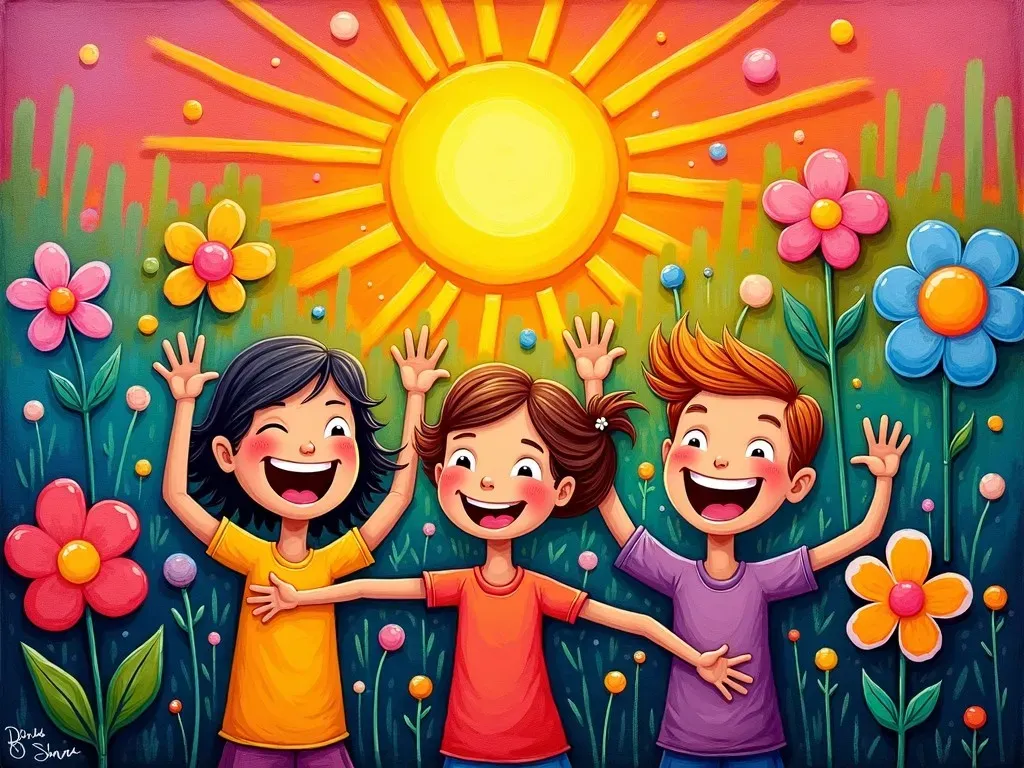Famous happy paintings are not only visual treats but also representations of joy and positivity in art. These masterpieces transcend their physical form to convey feelings that resonate with viewers, evoking smiles and uplifting spirits. In this exploration of famous happy paintings, we delve into art that encapsulates the essence of happiness, featuring artists whose work forever changed the landscape of joyful expression.
The Most Celebrated Happy Paintings
Many iconic artworks depict joy and happiness, capturing ephemeral moments or profound emotions. Below are some of the most celebrated paintings known for their vibrant representations of joy.
List of Famous Happy Paintings
| Artwork | Artist | Year | Description |
|---|---|---|---|
| The Kiss | Gustav Klimt | 1907-1908 | A romantic piece symbolizing love and ecstasy using gold leaf and intricate patterns. |
| Sunflowers | Vincent Van Gogh | 1888 | A vibrant series representing warmth and positivity, conveying Van Gogh’s admiration for nature. |
| Water Lilies | claude monet | 1899-1926 | A serene exploration of light and color reflecting the tranquility of nature. |
| The Dance | Henri Matisse | 1910 | A celebration of life and community depicted through joyous figures dancing in harmony. |
| Girl with a Pearl Earring | Johannes Vermeer | 1665 | The painting’s enigmatic smile evokes a sense of enigmatic joy and beauty. |
Diving Deeper into the Joyful Artworks
-
The Kiss by Gustav Klimt
Famous for its luxurious gold layers and intricate patterns, "The Kiss" epitomizes love and intimacy. Set against a rich, gilded backdrop, the couple’s embrace is captured in a moment eternally suspended in time. This masterpiece resonates with emotional depth and aesthetic pleasure, creating an aura of happiness that captivates viewers. -
Sunflowers by Vincent Van Gogh
Van Gogh’s "Sunflowers" series uses bold yellows and dynamic brush strokes to symbolize hope and optimism. These masterpieces express his passion for life and joy in the ordinary beauty of nature. Van Gogh believed in the transformative power of art, using sunflowers to reflect his deep emotional palette. -
Water Lilies by Claude Monet
Monet’s series of water lily paintings captures the serene and tranquil beauty of his garden. The soft and vivid colors depict reflections that change with the light, creating a perfect harmony between nature and art. These works are a reminder of the peaceful and joyful elements of life. -
The Dance by Henri Matisse
"The Dance" captures the exuberance of life and freedom through rhythmic movement and vibrant colors. The circular positioning of dancing figures evokes feelings of unity and joy, embodying playful abandon characteristic of Matisse’s work. -
Girl with a Pearl Earring by Johannes Vermeer
Often referred to as the "Mona Lisa of the North," this painting exudes a unique charm and joy captured in the girl’s smile and enigmatic gaze. Vermeer’s masterful play of light adds depth and intrigue, drawing viewers to connect with the subject’s emotion.
The Evolution of Happiness in Art
Art reflecting happiness has evolved through various movements. Each period brought new styles, Techniques, and perspectives on joy:
| Period | Characteristics | Notable Artists |
|---|---|---|
| Impressionism | Use of light and vibrant colors to depict fleeting moments | Claude Monet, Pierre-Auguste Renoir |
| Fauvism | Bold colors and simplified forms used to evoke emotions | Henri Matisse, André Derain |
| Post-Impressionism | Personal reaction to Impressionism, exploring deeper emotional resonance | Vincent Van Gogh, Paul Cézanne |
Characteristics of Happy Paintings
Happy paintings often share several characteristics that can evoke emotions in viewers.
Color Palette
Bright and vibrant colors dominate happy paintings. Artists often utilize:
- Yellow: Associated with sunshine and joy.
- Pink and Red: Reflecting passion and warmth.
- Blue and Green: Inducing feelings of peace and tranquility.
Composition
Happy paintings frequently employ dynamic compositions:
- Circular Orbits: Suggesting movement and continuity, like in Matisse’s "The Dance."
- Symmetrical Balance: Creating harmony, providing stability without losing excitement.
Subject Matter
The themes represented often include:
- Nature: Flowers, gardens, and serene landscapes (Monet’s water lilies).
- Human Connection: Embraces, interactions, and communal activities (Klimt’s "The Kiss").
FAQs
Q: What defines a “happy painting”?
A: A happy painting is characterized by vibrant colors, joyful themes, and emotions that evoke a sense of positivity and happiness in the viewer.
Q: How can such paintings impact emotions?
A: Art has the power to evoke emotions through visual language; colors and subjects can trigger feelings of joy, nostalgia, or peace.
Q: Are there contemporary artists known for happy paintings?
A: Yes, contemporary artists like Yayoi Kusama and Takashi Murakami explore happiness in their vibrant, bold, and often whimsical works.
Q: What is the significance of sunflowers in Van Gogh’s paintings?
A: For Van Gogh, sunflowers symbolized happiness, friendship, and warmth, often used to express his optimism despite personal struggles.
Q: Can looking at happy paintings have psychological benefits?
A: Research suggests that exposure to cheerful art can lower stress levels and enhance mood, making art appreciation a therapeutic experience.
Conclusion
The exploration of famous happy paintings reveals a rich tapestry of joy intertwined with artistry. The innovative styles, vibrant palettes, and emotive subjects remind us of the beauty in happiness that transcends time and culture, bringing light to our lives and evoking smiles through generations. For a more immersive experience into these artworks, visit The Culture Trip for further reading on art that uplifts the spirit.
